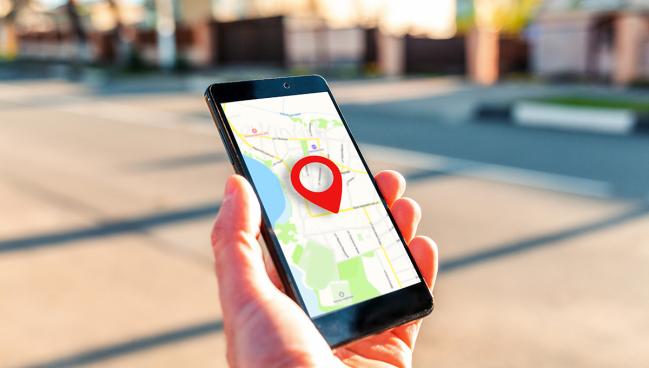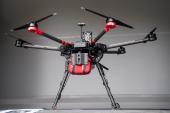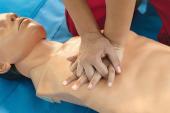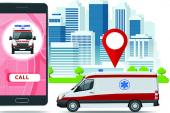Improving AED Use for OHCAs With an App? Neutral Study Shows It’s Complicated
The results, from Sweden, might be different in a setting like the US, where bystander CPR culture is not as strong, experts say.

A smartphone app that alerts trained citizens to respond to nearby of out-of-hospital cardiac arrests (OHCAs) does not seem to increase the application of automated external defibrillators (AEDs), according to a Swedish randomized trial.
The same app, Heartrunner, previously showed potential in increasing the rates of bystander CPR, but researchers say the current study may be limited by a higher than expected rate of AED use in the control arm as well as the lack of AEDs in home settings, where more than three-quarters of the OHCAs took place.
“We do not interpret the lack of statistical differences between treatment groups to reflect the fact that the volunteer responder system does not have an effect,” write Ellinor Berglund, RN, PhD (Karolinska Institutet, Stockholm, Sweden), and colleagues. “Instead, we conclude that the control group grew strong as a result of methodological issues. Therefore, our overall conclusion is that the volunteer responder system contributes to an increase in the overall use of AEDs and bystander CPR and may represent an important complement to the efforts of standard EMS [emergency medical services] and first responders.”
Commenting on the study for TCTMD, Anezi Uzendu, MD (Saint Luke’s Mid America Heart Institute, Kansas City, MO), said he was initially taken off guard to see the study was negative. “The resuscitation community overall has been really excited about the prospect of improving bystander responses with technology and apps,” he said. “I was definitely surprised that it ended up being negative, but I think the more you read into the study and start understanding what some of the flaws potentially could be and maybe some of the places where we need to ask more questions, we can try and figure out ways to improve app-based activation of rescuers.”
App Offers Maps, Instructions
For the study, published online last week in JAMA Cardiology, Berglund and colleagues activated volunteer citizen responders through the Heartrunner app to 947 OHCA events (median patient age 73 years; 65.3% male) in two Swedish regions between December 2018 and January 2020. Each volunteer was randomized to either receive map-aided instructions to retrieve nearest available public AED on their way to the OHCA (n = 461) or report directly to the victim and begin bystander CPR (n = 486).
The rates of the primary endpoint of AED attachment before EMS arrival were similar regardless of if the volunteer was randomized to the intervention or control group (13.2% vs 9.5%; P = 0.08), with 60.7% of all AEDs applied by lay volunteers who were not activated by the Heartrunner app. Bystander CPR (69.0% vs 71.6%; P = 0.42) and defibrillation before EMS arrival (3.7% vs 3.9%; P = 0.99) also were similar between the groups.
The researchers observed an 11.4% crossover rate of volunteers who sought out AEDs when they weren’t instructed to, as well as a 30.9% rate of compliance to instructions of seeking out the AED for those in the intervention arm.
They high rate of bystander CPR in Sweden, while impressive, seems to have negatively affected the findings, Uzendu said. “They've been leading the world in CPR and AED education and making sure they have a community of rescuers—people that are cognizant of sudden cardiac death and the importance of bystander interventions—and so that potentially played a role in the high AED application rates in the control arm,” he said. “That was one of the reasons why I think this study was negative.”
If the study had been performed somewhere like the US, where rates of bystander CPR are much lower, it’s possible the outcomes would have been different, Uzendu guessed.
He also questioned why so few volunteers who were prompted to seek out an AED actually did so and pointed out that there could be other challenges to retrieving an AED that need to be further understood. “Was it that people didn't know how to use the AED once they actually did retrieve it? What other barriers are in place?” Uzendu asked. “Was it the distance to the AED? Was it that the AED wasn't actually accessible? Maybe it's locked up in a building.”
In an accompanying editorial, Kevin G. Volpp, MD, PhD, and Benjamin S. Abella, MD (both University of Pennsylvania, Philadelphia), take a different view on the study’s generalizability.
“It is sobering to recognize that in the US, it may be nearly impossible to even test an idea like this, given the lack of a supporting data infrastructure,” they write. “There is no uniform registry of AEDs in the US, unlike Sweden, which has a national registry that includes geolocation.”
In the US specifically, they advocate for increased funding for a cardiac arrest registry, a ten- to 100-fold increase in AED availability, more bystander CPR training, improved 911 dispatcher training for telephone-assisted CPR, and a national connected infrastructure to improve EMS response to OHCAs.
Yael L. Maxwell is Senior Medical Journalist for TCTMD and Section Editor of TCTMD's Fellows Forum. She served as the inaugural…
Read Full BioSources
Berglund E, Hollenberg J, Jonsson M, et al. Effect of smartphone dispatch of volunteer responders on automated external defibrillators and out-of-hospital cardiac arrests: the SAMBA randomized clinical trial. JAMA Cardiology. 2022;Epub ahead of print.
Volpp KG, Abella BS. Improving out-of-hospital cardiac arrest survival rates—optimization given constraints. JAMA Cardiology. 2022;Epub ahead of print.
Disclosures
- Berglund reports no relevant conflicts of interest.
- Volpp reports receiving grants from the National Institute of Aging and is co-owner of VALHealth.
- Abella reports receiving personal fees from Zoll, Becton Dickinson, and Stryke, and grants from Becton Dickinson, Neuroptics, and National Institute of Neurological Disorders and Stroke.





Comments